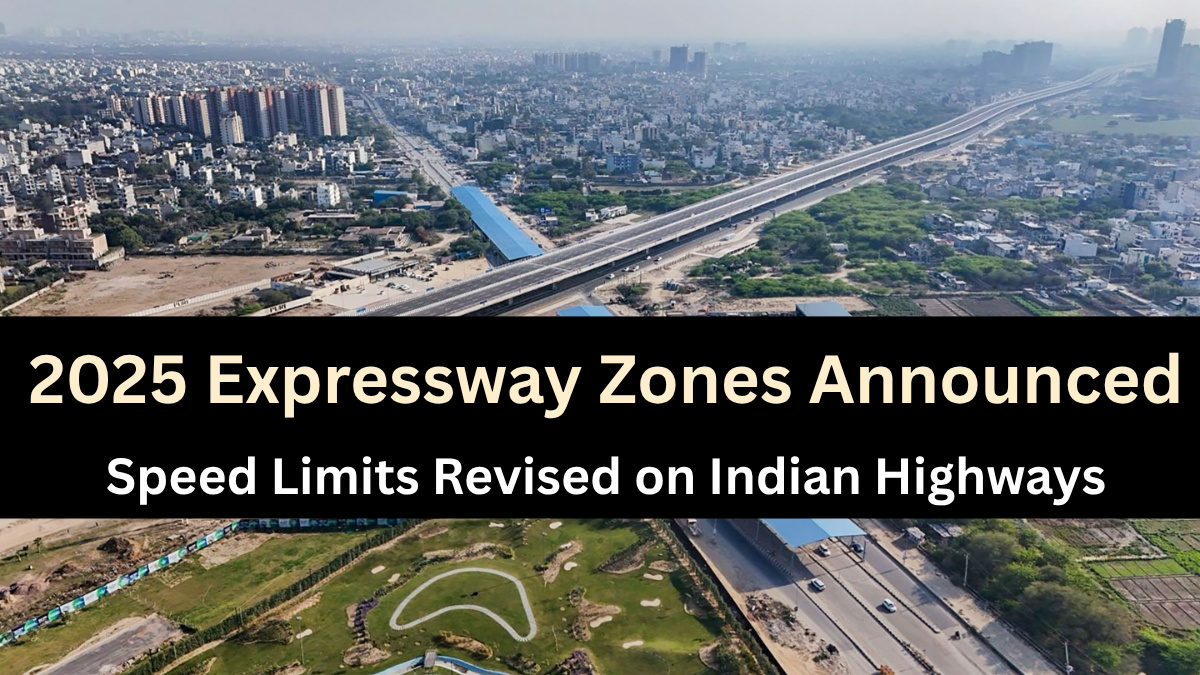India is racing toward modernization—not just in technology and infrastructure, but also in road safety standards. In a major development, the Ministry of Road Transport and Highways (MoRTH) has announced a significant India highway speed limit revision 2025. The updated guidelines outline new speed limits across National Highways (NH) and expressway zones to enhance commuter safety and streamline traffic flow.

Why the Speed Limit Revision?
With the rise in expressway infrastructure and faster cars on Indian roads, a fresh look at speed regulations was long overdue. The NH road law update is focused on:
-
Reducing road accidents caused by overspeeding
-
Encouraging smoother traffic movement in high-speed corridors
-
Aligning with international expressway safety norms
New Speed Limits by Vehicle Category
The revised rules vary based on vehicle type and road classification. Here’s a snapshot:
Speed Limit Table – Effective from April 2025
| Road Type | Vehicle Type | Old Speed Limit | New Speed Limit (2025) |
|---|---|---|---|
| Expressways | Cars & SUVs | 120 km/h | 140 km/h |
| Expressways | Trucks & Buses | 100 km/h | 110 km/h |
| National Highways | Cars & SUVs | 100 km/h | 110 km/h |
| National Highways | Trucks & Buses | 80 km/h | 90 km/h |
| Urban Roads (4+ lanes) | All Vehicles | 70 km/h | 80 km/h |
This expressway speed cap is applicable only on well-constructed corridors with controlled access and advanced traffic systems.
Zones Where New Rules Apply
The India highway speed limit revision 2025 applies to upgraded corridors across multiple states. Major routes include:
-
Delhi-Mumbai Expressway
-
Lucknow-Agra Expressway
-
Bangalore-Chennai Expressway
-
Purvanchal and Bundelkhand Expressways (UP)
State traffic departments are already putting up new signages and digital display boards to alert drivers about these revised limits.
Safety Measures Alongside Speed Increase
While the government is permitting higher speed thresholds, it’s also tightening safety and monitoring protocols, such as:
-
AI-enabled speed cameras
-
Average speed enforcement using ANPR (Automatic Number Plate Recognition)
-
Emergency SOS booths on expressways
-
Roadside patrol vehicles for quick response
The NH road law update is not just about going faster—it’s about doing it safely.
Government’s Statement
A MoRTH official stated:
“The revision aims to keep pace with technological advancements in both automobiles and infrastructure. Higher speeds will be allowed only on corridors designed to handle them, ensuring both efficiency and safety.”
FAQs
1. When will the new expressway speed limits be enforced?
The new limits under the India highway speed limit revision 2025 will be implemented from April 1, 2025.
2. Are the speed limits applicable across all expressways?
No. The expressway speed cap applies only on corridors with high-grade infrastructure, controlled access, and proper surveillance systems.
3. Will overspeeding fines also increase with the new laws?
Yes. Penalties will become stricter under the NH road law update, especially on high-speed corridors where new tech will aid in real-time enforcement.
4. Are two-wheelers allowed the same speed as cars on expressways?
No. Two-wheelers have a lower speed cap, typically between 80–100 km/h depending on the expressway.
Final Thoughts
This India highway speed limit revision 2025 is a big leap toward modern, efficient, and safer roads. But with speed comes responsibility. As new rules take effect, it’s crucial for every motorist to stay informed, respect limits, and drive safe.
Click here to lear more
